Are you working in the Project Management Office (PMO)? Or are you establishing a PMO? If so, you should read this article. It will provide you with essential building blocks needed to establish and maximize the PMO benefits and therefore its acceptance at your company. For a PMO in particular, the issue of acceptance is of far-reaching importance.
The article begins by discussing a PMO study conducted in Germany and its findings on PMO acceptance. You’ll then discover ways to qualitatively and quantitatively measure the benefits of having a PMO. Next, you’ll learn which important steps you can take to enhance the benefits provided by the PMO. Find out which measures help encourage acceptance of the PMO:
- Measuring the PMO’s work and the PM maturity level
- Measuring a PMO’s success
- Involving the PMO in strategic measures
- Separating operational & strategic project portfolio management
- Actively promoting the PMO
- Documenting the PMO responsibilities
- Ensuring personnel continuity in the PMO
- Conclusion – How to Increase PMO benefits
Let’s jump right into it!
Special Download: How to setup a PMO in 4 simple steps (PDF file)
Please fill in the form.
* Required Fields | Data Protection
PMO Benefits and Acceptance – Some Statistics
The PMO’s contribution to a company’s success is often neither measured nor adequately communicated. This can give the impression that having a project management office offers minimal or no advantages. This, in turn, affects its acceptance.
An empirical PMO study by the German Association for Project Management (GPM)* devotes an entire chapter to PMO acceptance. The study was conducted in cooperation with Nuertingen-Geislingen University (HfWU) in 2013/2014. (More recent data is, unfortunately, unavailable.)
* Deutsche Gesellschaft für Projektmanagement e.V. (German Project Management Association, a registered organization)
Respondents to the PMO survey generally rated PMO acceptance at their own company as “good” or “satisfactory”.
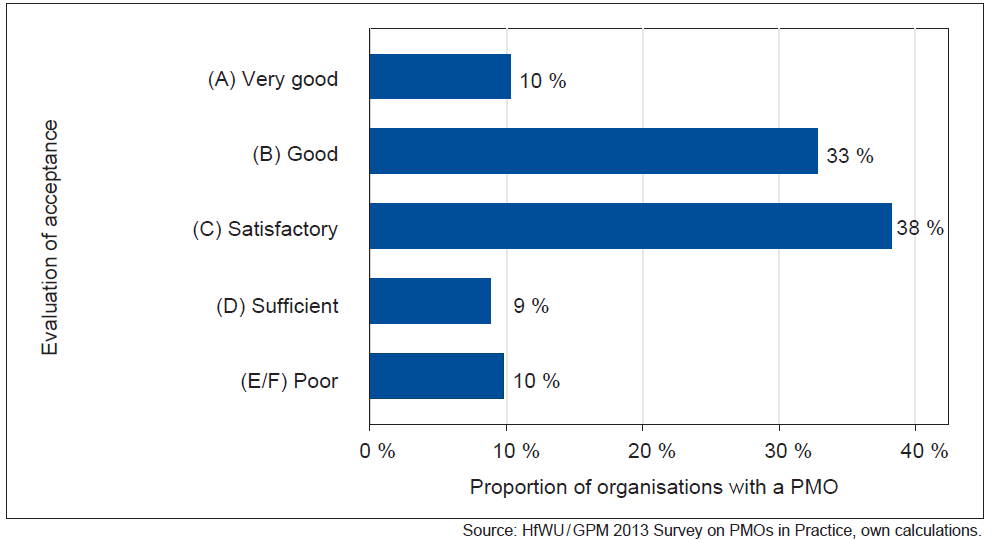
The survey, according to stakeholder groups, arrived at striking results. Managers, in particular, rate their own PMO as very good.
Special Download: 10 Vital PMO Success Factors (PDF file)
Please fill in the form.
* Required Fields | Data Protection
PMO managers and PMO members are those active in a PMO. They rate the benefits and acceptance of their work higher than their customers or partners do. In comparison, only the project managers are less accepting of the PMO.
The study arrived at another interesting finding:
The overall acceptance of a PMO within an organization tends to be better in cases where
- The PMO is involved in the strategic decision-making and control processes
- Quantitative benchmarking is used to measure the success of project management and the PMO
The conclusion we can draw from this study is:
The PMO enjoys greater acceptance within a company if the PMO is involved in:
- The strategic assessment of projects
- (Quantitative) Performance measurement
But the PMO survey results can also be viewed this way: in companies where the stakeholder acceptance is high, the PMO is also more likely to be involved in strategic tasks.
PMO Benefits: proven benefits right from the start
Basically speaking, the PMO provides reassurance that all the projects are under control. The PMO’s responsibilities (and therefore its scope of activity) vary by company and can help a company achieve its goals. These goals, in turn, can provide additional benefits. Consider these ways in which the PMO can benefit your company:
- All your projects are strategically oriented
- All your projects are successfully executed
- Project performance is maximized
- Resource utilization is optimized
- Missed deadlines and cost/resource overruns are minimized
- Project risks are minimized
- Corporate success is maximized
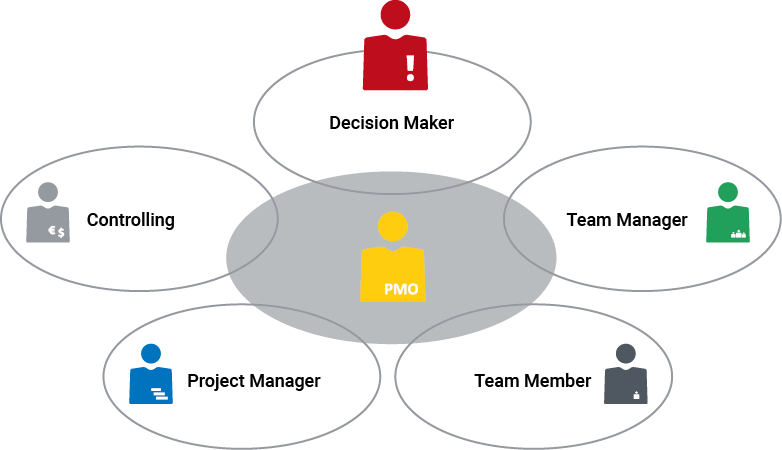
The PMO is the heart of multi-project management.
The actual benefits are qualitatively and quantitatively measurable.
Our tip: Begin measuring the PMO’s benefits right from the start. This gives you objective proof of the advantages, thereby increasing its acceptance.
To ensure the qualitative added value provided by the PMO, we recommend that you regularly survey the stakeholders to determine their satisfaction. Possible questions you can ask include:
- How satisfied are you overall?
- Was the information provided adequate?
- Did you receive prompt support?
- Did you receive the project support you needed?
- How accurate was the data reported?
- Was the project manager given adequate training?
- Did the tools provided have the right functionality?
To quantify the value of the PMO benefits you can, for example, analyze this historical project data:
- Number of projects and total number of project hours
- Total number of times the actual completion date deviated from the planned completion date
- Number of projects having the status green, yellow, or red
- Total number of times the project costs deviated from the planned budget
- Number of projects with project order, schedule, status reports, etc.
- Total amount of penalties paid for delays and/or quality defects
- Percentage of project hours not charged to customer projects
- Average percentage of successful projects (project profit and project revenue)
- Strategic contribution provided by project completion
Another possibility is by documenting the number of the PMO performance
- Project managers trained or certified
- Hours of coaching sessions
- Portfolio meetings
If you qualitatively and quantitatively demonstrate the value of the PMO regularly and communicate this to the stakeholders, you increase acceptance of the PMO’s work and ensure its continued survival.
Now let’s discuss what measures you can take to enhance the benefits and acceptance of the PMO. This list is not intended to be exhaustive.
Special Download (PDF): What are typical PMO Functions? (+ their importance)
This article provides you with a good comparison as well as ideas for functions you could consider next for your PMO. Please fill in the form to download.
* Required Fields | Data Protection
Step 1: Measuring the PMO’s Work and the PM Maturity Level
For monitoring, there is an essential precondition. You need to determine the initial status quo of the work the PMO does for your company.
If you measure this regularly, you will see changes in the PMO’s tasks. This lets you demonstrate how the maturity level of project management at the company has changed. The figure below shows areas in which you can quantitatively measure how well project management is handled within the company. Companies that do robust project management are considered to have a higher PM maturity level.
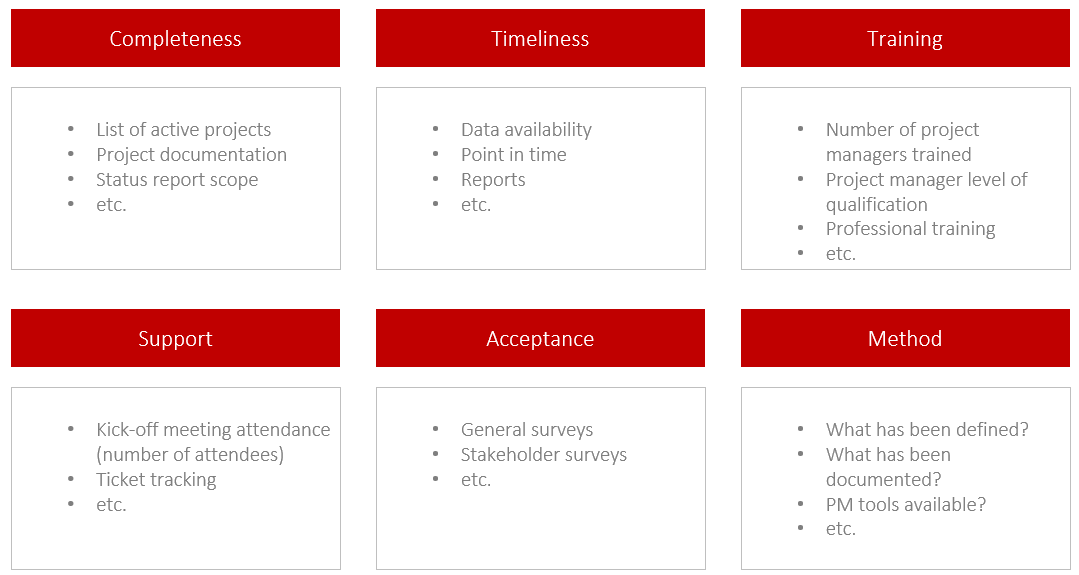
However, even this does not tell you whether the PMO’s work is perceived as good or bad. It only relates to quantitative performance measurement. If you assess the quantitative performance over several years, you’ll be able to see a trajectory. It will demonstrate that the PMO doesn’t just merely administer the project portfolio, but also actively drives project management at your company.
Looking for reasons why a PMO is important? Read our related article.
From the standpoint of the PMO members, the stakeholder surveys are particularly important for PMO stakeholder management. After all, the stakeholders’ satisfaction with the PMO is a significant factor in its acceptance.
These “soft” personal estimates of the stakeholders can be a much more important evidence of success. They outweigh “hard” measurements of, for example, financial savings.
Step 2: Measuring a PMO’s Success
The above study by the GPM lists five areas in which you can determine the success: These are:
- What is the degree of compliance with the defined project management process?
- What percentage of the project targets in the project portfolio are achieved?
- How well is the project portfolio managed and monitored?
- How feasible is the planned project portfolio?
- What is the maturity level of the projects in the planned project portfolio?
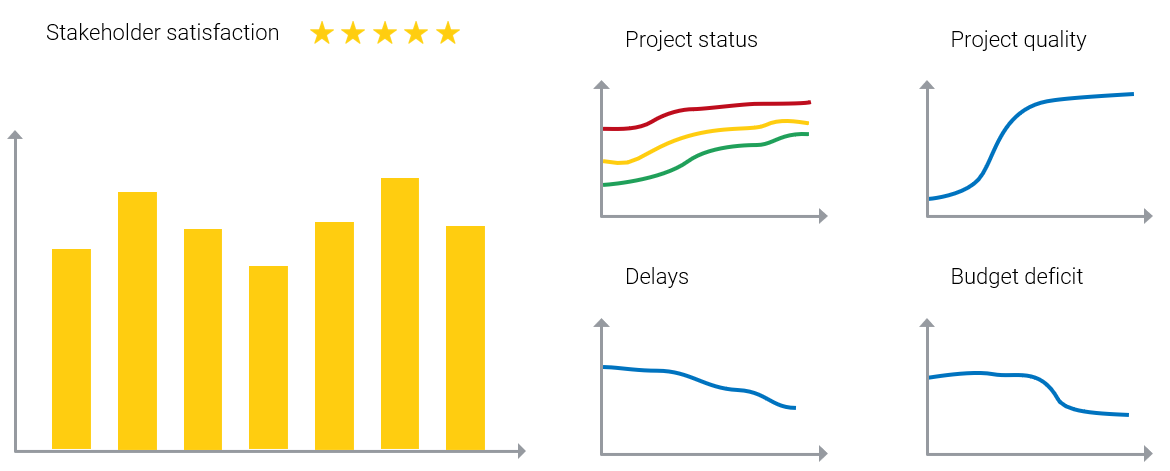
Such measurements can either be performed by the PMO itself or by external consultants. The second option will increase the acceptance of the survey results within the company as it avoids having the PMO evaluate its own performance.
The questions shown above can indicate the maturity level of project management at the company. If you compare these measurements to the status quo on a regular basis, you can demonstrate that the PMO is making progress in enhancing its performance.
Read this article to learn about other ways to measure PMO achievements.
Step 3: Involving the PMO in Strategic Measures
The study by the GPM showed that one thing is especially helpful in increasing acceptance within the company – involving the PMO in strategic measures. For instance, the PMO members can support management in the following strategic areas:
- Which projects have actually been launched and which have not?
- How does the prioritization in the selection process occur?
- What added value do the projects contribute to the company’s strategic objectives?
- How are cross-project budget and resource conflicts resolved?
- How is the PMO involved in the budgeting process?
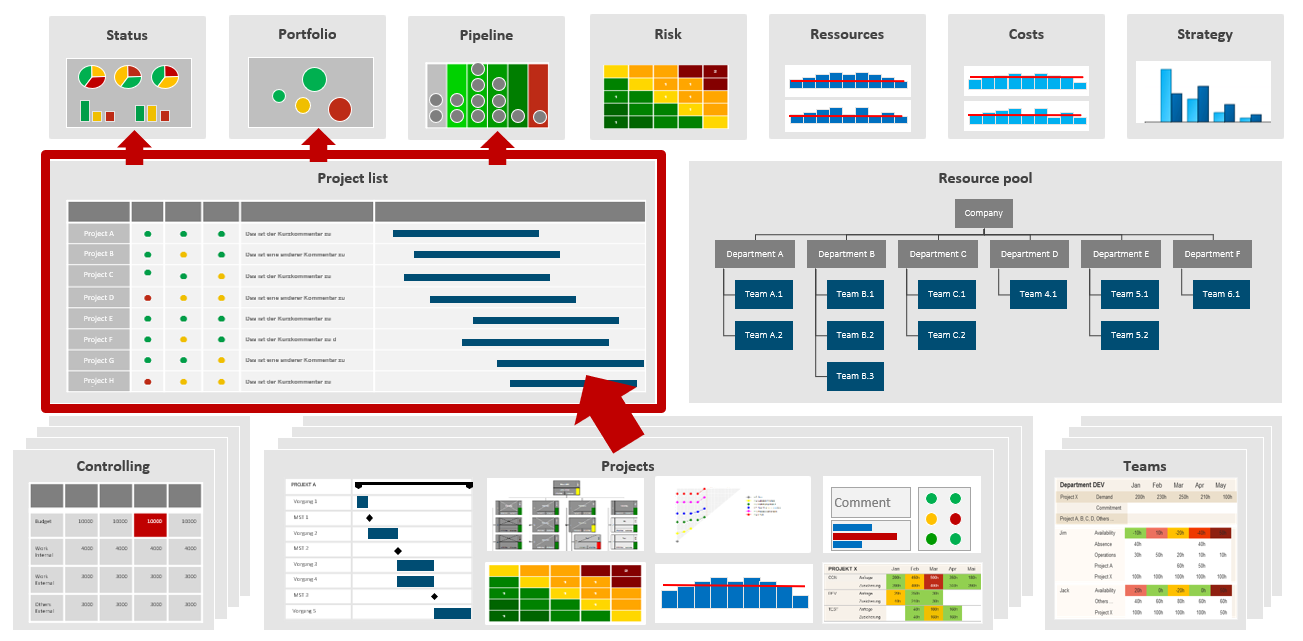
Step 4: Separating the Operational & Strategic Aspects of Project Portfolio Management
Not every company assigns strategic tasks to the PMO. For instance, if your company does, you should consider separating the PMO objectives into strategic and operational tasks to earn the trust of the project managers.
There is an advantage to having an operational PMO independent from top management: it is less likely to be perceived as an “inspector”. In meetings, the PMO hears about problems in projects. An inspector might feel the need to report these problems to management, and most project managers would prefer to avoid this degree of transparency.
Strategic project portfolio management (SPPM) can take on tasks such as:
- Prioritization
- Decision-making
- Budgeting
- Overall capacity planning
Operational project portfolio management (OPPM) can take on:
- Project controlling
- Project staffing
You might be interested in reading “The PMO of the Future”.
Step 5: Actively promote the PMO
The adage “Do good and talk about it.” also applies to the PMO. Proactive communication with all stakeholders will enable you to highlight:
- Services the PMO can offer other roles
- Successful achievements of the PMO
You can promote the PMO via:
- Regular internal emails
- Dedicated intranet site – which you’ll need to keep up to date and can use to make news available quickly
To enhance the PMO’s visibility, you can schedule regular events such as best practice forums. You can also increase stakeholder acceptance by establishing a PM community within the company. This enables you to involve project managers in shaping project management practices.
Positioning the PMO in the higher echelons of the business hierarchy is also helpful for communication. Presenting the PMO achievements in a positive light can be beneficial. One good opportunity for this type of PMO marketing is to organize internal events celebrating successfully completed projects. This prominent mention will definitely attract attention.
You might also like our Checklist of 10 Vital Success Factors for Establishing a PMO.
Step 6: Documenting the PMO Responsibilities
What does the PMO do? Do people within the company really understand the PMO’s objectives, stakeholders and responsibilities?
The expectations people have of the PMO depends heavily on actually documenting what the PMO members do. What is each member responsible for? Stakeholders are more likely to be satisfied with the PMO’s efforts if their own expectations were met – which is why it’s important to document what the PMO does.
Another approach to PMO organization involves Agile PMOs.
You can read the related article here.
It’s important to make sure that the PMO’s tasks are carefully documented, otherwise the PMO risks not meeting the expectations of the target group, which can lead to stakeholder dissatisfaction. The task description should also state which important tasks are beyond the responsibility of the PMO.
You should classify the type of support, too. This allows you to control the direction in which the PMO should develop.
You should also qualify the operational support. Will the PMO actually be doing things (e.g. “guiding the mouse” of the project manager when using the tool)? Or will it merely give instructions on how the project manager should do things? This would mean that the project managers are generally expected to do the work themselves.
Looking for a practical example? Read our interview with a PMO manager.
Over time, the PMO will have to adapt its responsibilities due to the project managers’ learning curve. You’ll therefore have to regularly update the documentation of what the PMO does. It is also paramount that the role of the PMO remains the same in all projects and does not vary. The PMO documentation will help you achieve this.
Step 7: Ensuring Personnel Continuity in the PMO
To achieve stakeholder acceptance, PMO members have to be two things:
- Qualified for the role
- On par with experienced project managers
This is impossible if the PMO team is constantly changing. Try to avoid having new contact persons all the time. At worst, they may lack project management experience. In addition, having the right PMO team members is essential.
Having a familiar face on the PMO team can foster the acceptance of all stakeholders at the company and improve PMO stakeholder management.
Conclusion – How to Increase PMO Benefits
This article has discussed seven measures you can take to increase the acceptance of the PMO:
- Document the PMO’s work
- Measure the PMO’s successes
- Involve the PMO in strategic measures
- Separate operational and strategic project portfolio management
- Actively promote the PMO
- Document the responsibilities of the PMO
- Ensure continuity in PMO staffing
One last tip: If you plan to implement one or more of these measures at your own company, we recommend that you start with prioritizing the measures and then take small but goal-oriented steps in the right direction. Ensure a sufficient level of commitment as well as support from top management.
Our final tips
Get to know the individually adaptable “PPM Paradise” – the optimal environment for your enterprise-wide project, program, portfolio and resource management. Download the eBook now (just click, no form).
And sign up for our bi-weekly blog newsletter to make sure you receive all our updates.
What experiences have you had with successful program management? Is there a critical success factor that you feel we have missed? Have these tips been helpful? Please let us know in the comment area below. We look forward to your feedback!
Subscribe to TPG BlogInfo: Never miss new practice-oriented tips & tricks
Every other week: Receive practical tips in TPG blog posts written by recognized experts in project, portfolio, and resource management.
* Required Fields | Data Protection
 Johann Strasser
Johann Strasser
Managing Partner at TPG
The certified engineer, has been a managing partner at TPG The Project Group since 2001. After many years as a development engineer in the automotive and energy sectors, Johann Strasser spent a decade as an independent trainer and consultant in the field of project management. During his tenure, he also served as project manager for software projects in the construction industry and provided scheduling and cost management support for large-scale construction projects. At TPG, he applies his expertise in product development and consulting services for international clients. His special focus is on PMO, project portfolios, hybrid project management, and resource management. For many years now, he has shared his knowledge through presentations, seminars, articles, and webinars.
Read more about Johann Strasser on LinkedIn and XING.
 Achim Schmidt-Sibeth
Achim Schmidt-Sibeth
Senior Marketing Manager
After earning his engineering degree in environmental technology, he gained many years of experience in project management through his work at an engineering office, an equipment manufacturer, and a multimedia agency. Achim Schmidt-Sibeth and his team have been responsible for marketing and communication at TPG The Project Group for many years now.


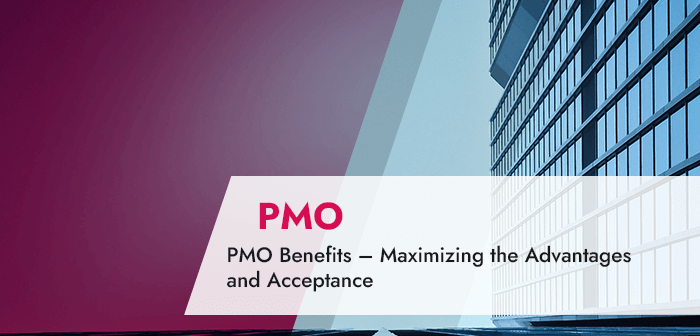




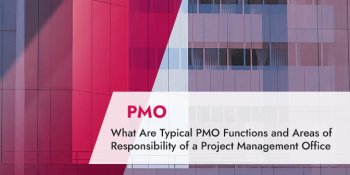
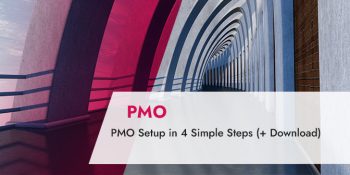
1 Comment
I think this is complementary to something I posted on slideshare a while ago. See https://www.slideshare.net/rodfurmstonevans/pmo-styles-14681402 which used a simple 2 dimensional model around PM Capability and Business Value